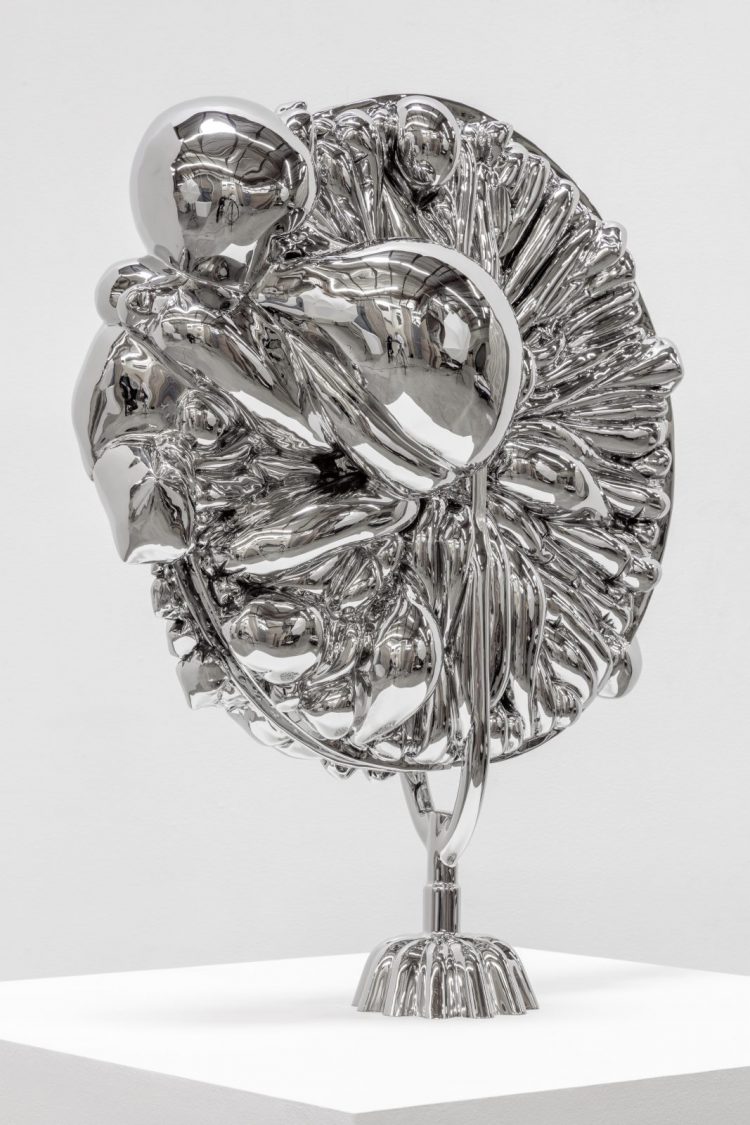5 QUESTIONS WITH JOEL MORRISON | ELEPHANT MAGAZINE
Text by Emily Steer

?I never sketch out an idea or prepare any tests before the work is attempted. I just go for it.? Joel Morrison presents a new selection of works this week at Reflex Amsterdam that take their cue from the West Coast 60s movement Light and Space, as well as the flashy glare of the sun on LA's cars.
Can you tell me a little about your upcoming show at Reflex Gallery?
Successful collaborations are unexpecteded, unforced, and require little courtship. Through only a few interactions with the gallery in Amsterdam, it was clear that a collaboration and a publication were forthcoming. Producing four new works in stainless steel and a book in less than six months is fast by anyone's standards, but it was drama free, clear, calm waters. We were going to produce only one new work and exhibit mostly unseen work from 2008-2012, but enthusiasm from both sides and a post-lunch brainstorm? led to four new pieces.
New Works is a simple but also statement title for your show. Do you feel the four new and unseen pieces are very clearly a new body of work for you? Have you taken a new direction with them?
The selection of works were chosen for a superficial cohesion. The curation undercuts a typical exhibition and falls somewhere in between a nine-year retrospective and evolution in working with a similar material. The viewer gets to see how one idea turns into another and although it's clear which work is recent, it's humbling for me to revisit my own evolution?a collection of ?Ah-hah? moments and ?Oh, shit? moments. The new direction is the burden of struggling with a material being replaced with a freedom to be searing and cool; it's work that I would make to impress my friends.
Your silver works are often made up of many different objects, from weather balloons and disco balls to edibles and busts. Do you begin by working with these objects in life, or do you sketch and design the sculptures more instinctively in the first instance?
I collect all these objects on the streets and alleys near my studio in LA or, less romantically, on eBay or Amazon. I use a tricked out version of a traditional mold-making process (like the rubber stuff the dentist makes you gag on to copy your teeth) which acts like a low-fi 3D camera. The objects are as they appear in real life, just composed in collages and combinations. I do use some 3D printing and CNC cutting and laser cutting, but all of the works in the Amsterdam exhibition are lost-wax stainless steel castings: a 5000-year-old process (give or take a few years). I have a ?sketchbook? but it contains words and phrases? gibberish or statistics. Whether a necessity to see an idea develop as quickly as possible, enthusiasm, or lack of patience, I never sketch out an idea or prepare any tests before the work is attempted. I just go for it, which allows for a lot of happy accidents and leaves room for colossal mistakes, sometimes ending in the abandonment of a project in mid-process.
You?ve previously mentioned that you?re inspired by the West Coast 1960s movement Light and Space. You also live and work in Los Angeles where the sun creates a powerful shine on car bumpers and tyre rims. To what extent do you feel these pieces are a direct response to LA?
I think a lot of Paul Gauguin paintings when he moved to Tahiti from Brittany were considered his less successful works, but he was a real artist absorbing and comunicating what he saw every day. Light and Space, Venice minimalism or reflective surface is the same thing. If I moved to Fiji my work would be much different?, if Robert Irwin or James Turrell had made their work in London it would look much different or perhaps not exist at all. Each culture has its own take on ?bling?. I?m conceptually influenced by Light and Space as an art movement but aesthetically connected to the street side.
You have gained experience in an industrial foundry and work alongside trained industrial craftsmen. What is it about this skill set that excited you to be a part of, and is it important to you to be able to complete as much of the work as possible with your own hands?
I have done exactly one project with a traditional fine art fabricator. It was a horrible experience. Big words, pristine white lab coats, and arrogance about how complicated it all was to make a piece of sculpture. I spent a lot hours absorbing the process and ?came to the conclusion it was one of the art world's biggest hustles. After spending several years connecting to groups of skilled industrial and street craftsman I assembled a unique and talented group that had all the skills of a fine art fabricator but perspectives and opinions based on speed and efficiency. One of the perks was they did not care if it was fine art or not, but they also expected me to be able to keep up with them in every step of the process. The pay off was a unique approach to making sculpture. I acquired a set of skills I never expected to have, not only were we turning out really cool work, but I was able to have my hands in every step and understood where and how I could push the process.
?New Works? previews on 6 May and runs until 11 July at Reflex Amsterdam. reflexamsterdam.com
(source: elephantmag.com)